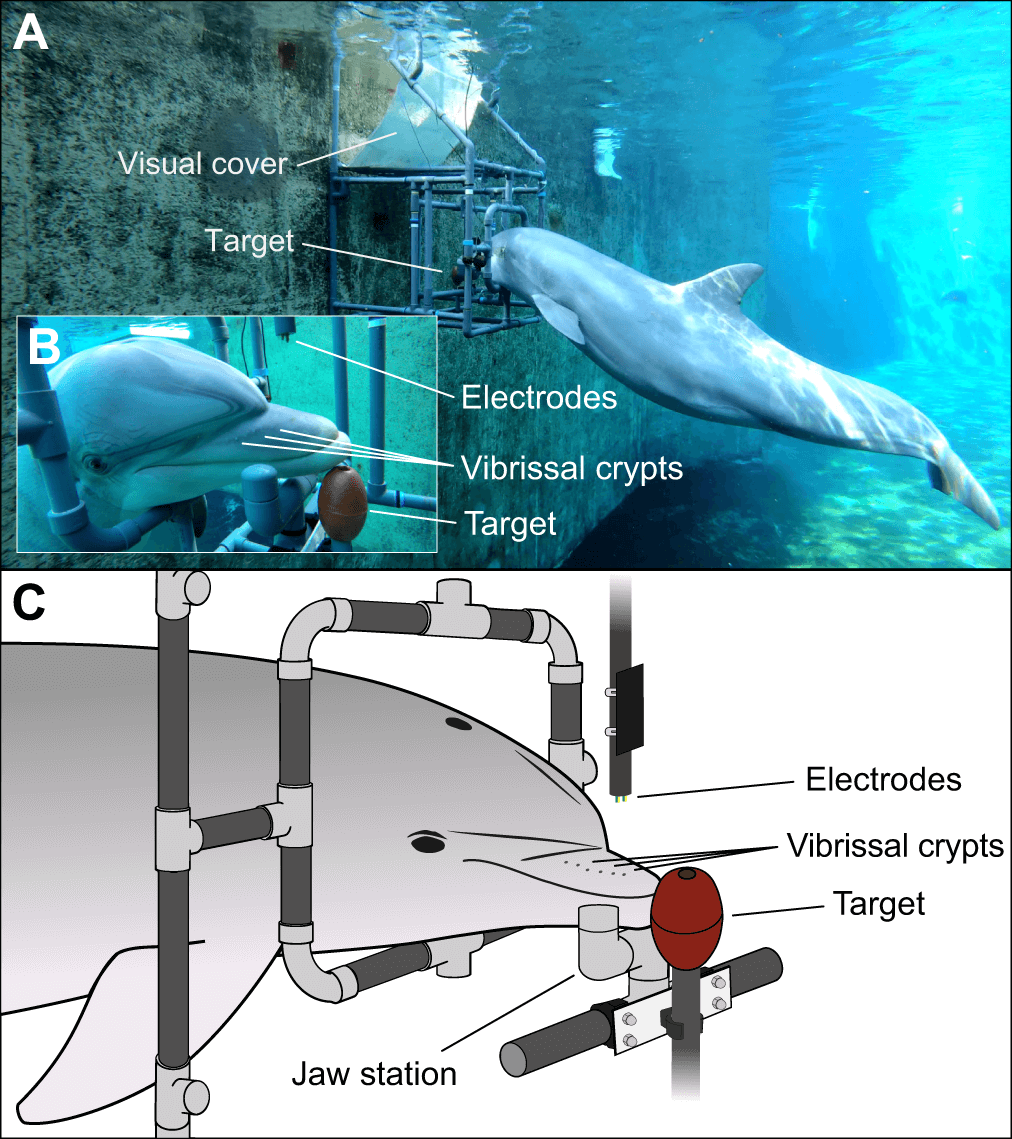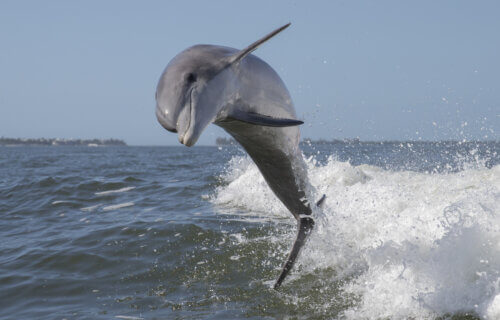NUREMBERG, Germany — Scientists at the Nuremberg Zoo in Germany have discovered a previously unknown sensory ability in bottlenose dolphins: electroreception. The truly shocking finding bridges the gap between dolphins and other known electroreceptive animals and adds a new understanding of how these charismatic creatures interact with their underwater world.
Electroreception, the ability to perceive weak electric fields, is typically associated with aquatic or semi-aquatic species. This sensory skill, fascinating in its own right, has been a focus of extensive research in marine biology, predominantly observed in weakly electric fishes and some amphibian species. However, the revelation that bottlenose dolphins possess this ability challenges our perception and expands our understanding of marine sensory biology.
Imagine a dolphin navigating the ocean’s depths, its path illuminated not by light but by the faint electrical signals of hidden prey. This ability could revolutionize our understanding of their foraging strategies, especially in challenging environments. In addition to the five senses we share with dolphins, these brilliant mammals also use echolocation to find prey. Echolocation involves using the echoes from high-frequency sounds emitted by the dolphins to locate things. Bats are another animal well-known for using echolocation. But scientists say this new, electrical seventh sense might extend beyond foraging, potentially playing a role in navigation and communication within the vast and varied tapestry of the ocean.
How Scientists Unveiled Dolphins’ Electrifying Seventh Sense
The research began with a curious observation about bottlenose dolphin calves, who are born with whisker-like structures along their snouts. These whiskers, which fall out shortly after birth, leave behind vibrissal pits. Intrigued by the resemblance of these pits to structures in sharks that detect electric fields, scientists embarked on a series of experiments to determine if adult dolphins retained a similar electrosensory capability.
The study involved two female bottlenose dolphins named Dolly and Donna. Led by prominent marine biologists Tim Hüttner and Guido Dehnhard, the research team designed an intricate experiment to test the dolphins’ ability to detect electric fields. The setup included a carefully constructed apparatus in a controlled pool environment, where the dolphins were exposed to both direct current (DC) and alternating current (AC) electric fields.
The experimental design was a testament to scientific precision and patience. The dolphins, trained to participate actively, were exposed to varying strengths of electric fields. Researchers meticulously reduced the intensity of these fields to pinpoint the exact threshold of the dolphins’ electroreceptive abilities. This rigorous approach ensured the accuracy and reliability of the results.
Sensitivity Beyond Expectation
The findings were nothing short of astonishing. Dolly and Donna demonstrated an acute sensitivity to electric fields, detecting strengths as low as 5.5 and 2.4 microvolts per centimeter for DC fields, respectively. Their ability to sense AC fields, though varying with frequency, further underscored their remarkable electroreceptive capabilities.

But the study didn’t stop there. The researchers wondered if dolphins could also detect pulsating electric fields similar to those produced by the movements of fish gills. Remarkably, both Donna and Dolly demonstrated this ability, though their sensitivity to oscillating fields was not as acute as to static fields. Donna, notably more sensitive, could detect the slowest pulsating field at 11.7 microvolts per centimeter.
This sensory prowess of dolphins opens a new chapter in understanding their interaction with the marine environment. Electroreception could be particularly crucial in benthic foraging, where dolphins search for food along the seafloor. In conditions where visibility is poor, and echolocation is less effective, such as in murky, sediment-laden waters, electroreception could be a key asset in locating prey.
Additionally, the researchers propose that dolphins might use their electrosensation in conjunction with the Earth’s magnetic field for navigation, suggesting a global-scale application of this sensory ability.
Implications for Marine Biology and Conservation
The discovery of electroreception in dolphins has broad implications, both scientific and ecological. It challenges existing paradigms in marine sensory biology, suggesting that these animals have adapted complex and nuanced ways to survive and thrive in their underwater habitat. The study also underscores the importance of conservation efforts, as understanding these intricate adaptations is crucial for protecting these species and their ecosystems.
Future studies, potentially in more natural settings, could shed light on how dolphins utilize this sense in their daily lives, from hunting and foraging to social interactions and navigation. The possibilities are as vast as the oceans themselves.
The study is published in the Journal of Experimental Biology.
You might also be interested in:
- Stranded dolphins show telltale signs of Alzheimer’s disease
- Whales, dolphins recognize when killer whales are near by their alarming calls
- Sharks possess extraordinary electrical ‘sixth sense’ tuned for attack-mode

